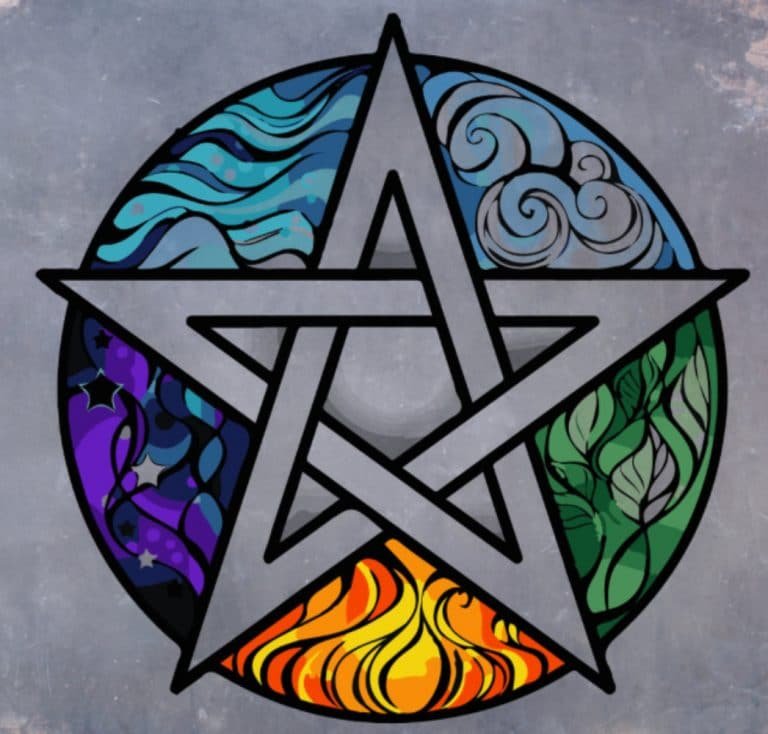The Wheel of the Year is a sacred calendar followed by many Pagan traditions, marking the cycle of the seasons and celebrating the rhythms of nature. At its core, the Wheel of the Year reflects the eternal dance of life, death, and rebirth, mirroring the cyclical nature of existence itself.
The Wheel is comprised of 8 Sabbats. The 4 Greater Sabbats celebrate the Moon, and are called Cross-Quarter Days, while the 4 minor Sabbats are Quarter Days, and are marked by the movement of the Sun (the solstices and equinoxes). Despite the distinction between Greater and Minor, all Sabbats are equally important.
Origins of the Wheel of the Year
The roots of the Wheel of the Year can be traced back to ancient agricultural societies, where people lived closely connected to the land and its cycles. These early peoples observed the changing seasons and developed rituals and celebrations to honor and align themselves with the natural world. Over time, these practices evolved and were incorporated into various religious and spiritual traditions, including modern Paganism.
The Sabbats
1. Yule (Winter Solstice): Yule marks the longest night of the year, when the sun is at its lowest point in the sky. It symbolizes the rebirth of the sun and the return of light to the world. Yule is a time of introspection, renewal, and celebrating the return of longer days. It occurs around December 21st in the Northern Hemisphere and June 21st in the Southern Hemisphere.
2. Imbolc: Imbolc marks the midpoint between the winter solstice and the spring equinox. It is a time of purification, inspiration, and the first signs of spring. Occurring around February 1st, it bridges the gap between the darkness of winter and the burgeoning light of the coming season. It’s a time for the stirring of new life. As we honor the goddess Brigid, we embrace the creative potential within ourselves and the world around us, often celebrating with rituals focused on healing, creativity, and new beginnings.
3. Ostara (Spring Equinox): Ostara heralds the arrival of spring, when day and night are of equal length. It occurs around March 21st in the Northern Hemisphere and September 21st in the Southern Hemisphere. It is a time of balance and fertility, symbolized by the budding of plants and the return of life to the earth.As nature awakens from its slumber, we celebrate the fertility and vitality bursting forth. Ostara is a time of growth, renewal, and the celebration of new beginnings.
4. Beltane (May Day): Beltane marks the midpoint between the spring equinox and the summer solstice, heralding the arrival of summer, and is celebrated on May 1st. It is a time of fertility, passion, and abundance. As the earth blooms with life, we revel in the passion and fertility of the season. Beltane is a time of joyous celebration, love, and connection, where we honor the sacred union between the divine masculine and feminine.
5. Litha (Summer Solstice): Litha, celebrated around June 21st in the Northern Hemisphere and December 21st in the Southern Hemisphere, heralds the Summer Solstice, the longest day of the year. It is a time of abundance, vitality, and celebration. Litha is traditionally associated with fire, and bonfires are lit to honor the sun and ensure a bountiful harvest. As the sun reaches its peak, we bask in its warmth and abundance.
6. Lughnasadh: Lughnasadh marks the midpoint between the summer solstice and the autumn equinox. It signifies the beginning of the harvest season and is the first of the three harvest festivals. It is the harvesting of the Grains and is celebrated on August 1st. Lughnassadh is a time of abundance, gratitude, and honoring the sacrifices necessary for sustenance. Lughnasadh is associated with the god Lugh and is often celebrated with feasting, games, and rituals focused on harvest blessings.
7. Mabon: The autumnal equinox, also known as Mabon, marks the midpoint between the summer solstice and the winter solstice. It occurs around September 21st in the Northern Hemisphere and March 21st in the Southern Hemisphere.The second of the harvest festivals, Mabon is the harvesting of the vines. Mabon signifies the onset of autumn, when day and night once again become equal. It is a time of harvest, gratitude, and reflection. Mabon is a time to give thanks for the abundance of the harvest season and to prepare for the colder months ahead. It is sometimes called the “Witches’ Thanksgiving.”
8. Samhain: Samhain occurs at the midpoint between the autumn equinox and the winter solstice, and marks the end of the harvest season and the beginning of winter. It is celebrated on October 31st and is a time of honoring the ancestors, remembering the dead, and reflecting on the cycle of life and death. Samhain is a liminal time when the veil between the worlds is thin, and rituals often involve divination, ancestor veneration, and paying respects to those who have passed on, and honoring the wisdom of those who came before us.
Through the celebration of the eight Sabbats, we honor the eternal dance of life, death, and rebirth, weaving ourselves into the tapestry of the natural world. Each Sabbat is a sacred thread, connecting us to the rhythms of the earth and the mysteries of the cosmos. As we journey through the Wheel of the Year, may we walk with reverence, gratitude, and joy, embracing the cycles of the seasons and the infinite possibilities they hold.



